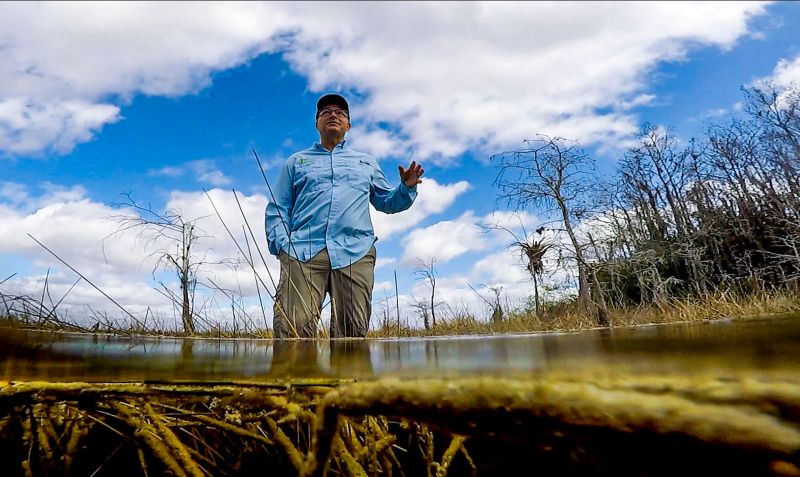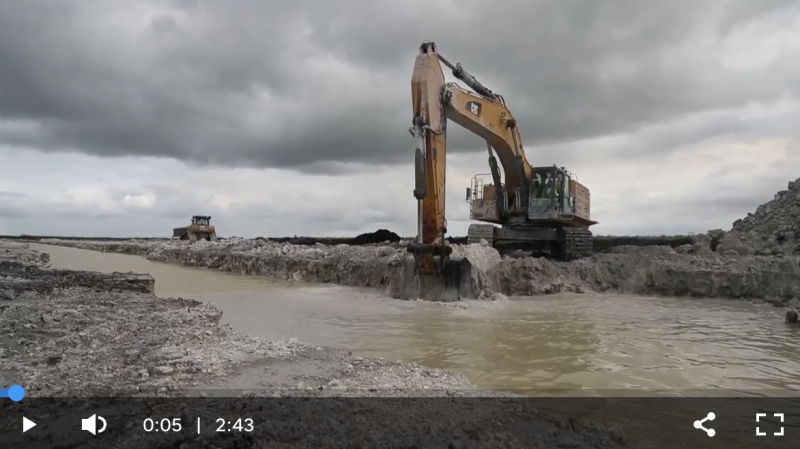Small but mighty: Meet periphyton, the Everglades' hardest-working microorganisms
Published on by Water Network Research, Official research team of The Water Network in Case Studies
Perry who? It’s not an unreasonable question for someone hearing about the Everglades superstar named periphyton for the first time.
While not a majestic scene-stealer, this humble substance is fundamental to life in the River of Grass. It may not soar like a snail kite, ripple like sawgrass or glide like a ‘gator, but it’s every bit as important to the Everglades – and wetlands in general – as those better-known life forms.

Periphyton can be found in the waters of the Everglades. This squishy, spongy, slimy stuff is a key building block of the Everglades. A cooperative clumping of algae, bacteria, plants and minerals, it's a key food source for the little critters that feed all the rest. It's also a great indicator of the system's overall health, so scientists are paying close attention to it. On Friday, February4, 2022, Steve Davis, Chief Science Officer for The Everglades Foundation, talked a bit about the Periphyton found in the Everglades. ANDREA MELENDEZ/THE NEWS-PRESS/USA TODAY,FLORIDA NETWORK
Supremely spongy stuff, it’s softly squishy underfoot, like a super-plush carpet, says Paul Gray, Audubon Florida’s director of science. He should know. Gray is usually barefoot when he’s out researching, so he’s walked on and through plenty of it.
Periphyton can be found in the waters of the Everglades. This squishy, spongy, slimy stuff is a key building block of the Everglades. A cooperative clumping of algae, bacteria, plants and minerals, it's a key food source for the little critters that feed all the rest. It's also a great indicator of the system's overall health, so scientists are paying close attention to it. On Friday, February4, 2022, Steve Davis, Chief Science Officer for The Everglades Foundation, talked a bit about the Periphyton found in the Everglades.
Periphyton can be found in the waters of the Everglades. This squishy, spongy, slimy stuff is a key building block of the Everglades.
But just what is this four-syllable substance? There doesn’t appear to be a widely used common name, Gray says, “Most folks don't pay attention to it that I know of,” though aquatic ecologist and professor Evelyn Gaiser says she’s heard some call it “pond scum” or “swamp vomit.”
The word comes from the Greek for “around" peri and “plant" – phyton, which makes sense, because it can indeed grow around plants, like watery wool sweaters.
What makes periphyton tricky to describe is that it’s not one thing; it’s many.
“A complicated community … lots and lots of species who are all interacting in a variety of ways” is how Gaiser, Florida International University’s George M. Barley Jr. Endowed Chair in Everglades Research puts it. Other periphyton assemblages live around the globe, from the Great Lakes to New Zealand.
CHECK OUT THE VIDEO ABOUT THE SFWD PROJECT TO BRING CLEANED STORMWATER INTO THE EVERGLADES
SOURCE eu news press
Taxonomy
- Restoration
- Ecosystem Restoration, Primary Ecosystem Services valuation,
- Ecosystem Restoration
- restoration ecologist
